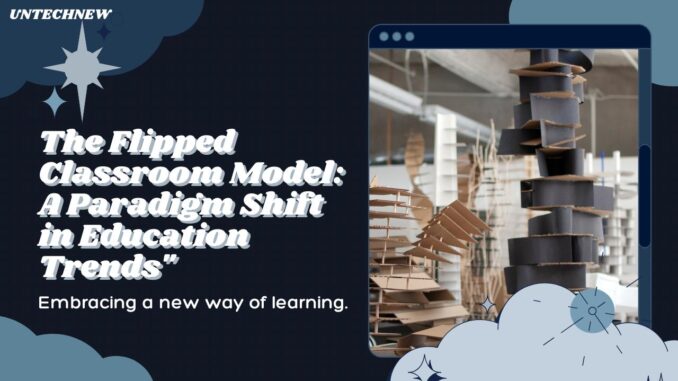
Introduction:
In recent years, the traditional model of education, where teachers deliver lectures in the classroom and assign homework for practice at home, has been gradually evolving. One significant innovation that has emerged is the flipped classroom model. This approach reverses the traditional teaching methods by delivering instructional content outside of the classroom, typically through videos or online modules, and using class time for active learning, collaborative activities, and individualized instruction. In this article, we’ll delve into the flipped classroom model, exploring its principles, benefits, challenges, and its impact as a paradigm shift in education trends.
Understanding the Flipped Classroom Model
The flipped classroom model flips the traditional approach to learning on its head. Instead of spending valuable class time on lectures, students engage with instructional content independently before coming to class. This pre-class work often takes the form of watching video lectures, reading assigned materials, or completing online quizzes. Class time is then reserved for interactive activities, discussions, group projects, and hands-on learning experiences facilitated by the teacher.
Principles of the Flipped Classroom Model
The flipped classroom model is grounded in several key principles:
- Active Learning: Students actively engage with course material during class time through discussions, problem-solving activities, and collaborative projects.
- Individualized Instruction: Teachers have more opportunities to provide personalized support and feedback to students based on their needs and learning styles.
- Student-Centered Approach: The focus shifts from the teacher as the sole source of knowledge to students as active participants in their own learning process.
- Flexibility and Differentiation: Students have the flexibility to learn at their own pace and access instructional materials outside of the classroom, allowing for differentiated instruction to meet diverse learning needs.
- Enhanced Engagement: By providing opportunities for hands-on learning and interactive activities, the flipped classroom model aims to increase student engagement and motivation.
Benefits of the Flipped Classroom Model
The flipped classroom model offers a range of benefits for both students and teachers:
- Improved Student Engagement: By shifting lectures outside of class time, students have more opportunities to engage actively with course material through discussions, problem-solving activities, and collaborative projects.
- Enhanced Learning Outcomes: Studies have shown that the flipped classroom model can lead to improved learning outcomes, including increased student achievement, retention, and critical thinking skills.
- Personalized Learning: Teachers can provide individualized support and feedback to students based on their needs and learning styles, leading to a more personalized learning experience.
- Increased Teacher-Student Interaction: With more class time dedicated to interactive activities, teachers can foster stronger relationships with students and provide more targeted support and guidance.
- Promotion of Lifelong Learning Skills: The flipped classroom model encourages students to take ownership of their learning, develop self-directed learning skills, and become lifelong learners.
Challenges of Implementing the Flipped Classroom Model
While the flipped classroom model offers many benefits, it also presents challenges for both students and teachers:
- Access to Technology: Implementing the flipped classroom model requires access to technology, including computers, tablets, and reliable internet access, which may not be available to all students.
- Digital Divide: The flipped classroom model may exacerbate existing inequalities in access to technology and digital literacy skills, widening the digital divide among students from different socioeconomic backgrounds.
- Time and Resources for Preparation: Teachers need to invest time and resources in creating high-quality instructional materials, such as video lectures and online modules, which can be time-consuming and challenging to produce.
- Student Accountability: Students must be motivated and accountable for completing pre-class work independently, which may require additional support and guidance from teachers.
- Classroom Management: Teachers need to carefully plan and structure class time to ensure that it is used effectively for active learning activities, group work, and individualized instruction.
The Flipped Classroom Model as a Paradigm Shift in Education Trends
The flipped classroom model represents a paradigm shift in education trends by challenging traditional notions of teaching and learning. It promotes active learning, personalized instruction, and student-centered approaches, aligning with broader movements towards learner autonomy, competency-based education, and digital innovation in education.
By flipping the traditional classroom dynamic, the flipped classroom model empowers students to take ownership of their learning, engage actively with course material, and develop critical thinking and problem-solving skills. It also enables teachers to adopt more dynamic and interactive teaching methods, fostering deeper learning experiences and stronger connections with students.
As education continues to evolve in response to changing needs and advancements in technology, the flipped classroom model offers a promising framework for reimagining teaching and learning in the 21st century. By embracing this innovative approach, educators can create more engaging, inclusive, and effective learning environments that prepare students for success in an ever-changing world.

Leave a Reply